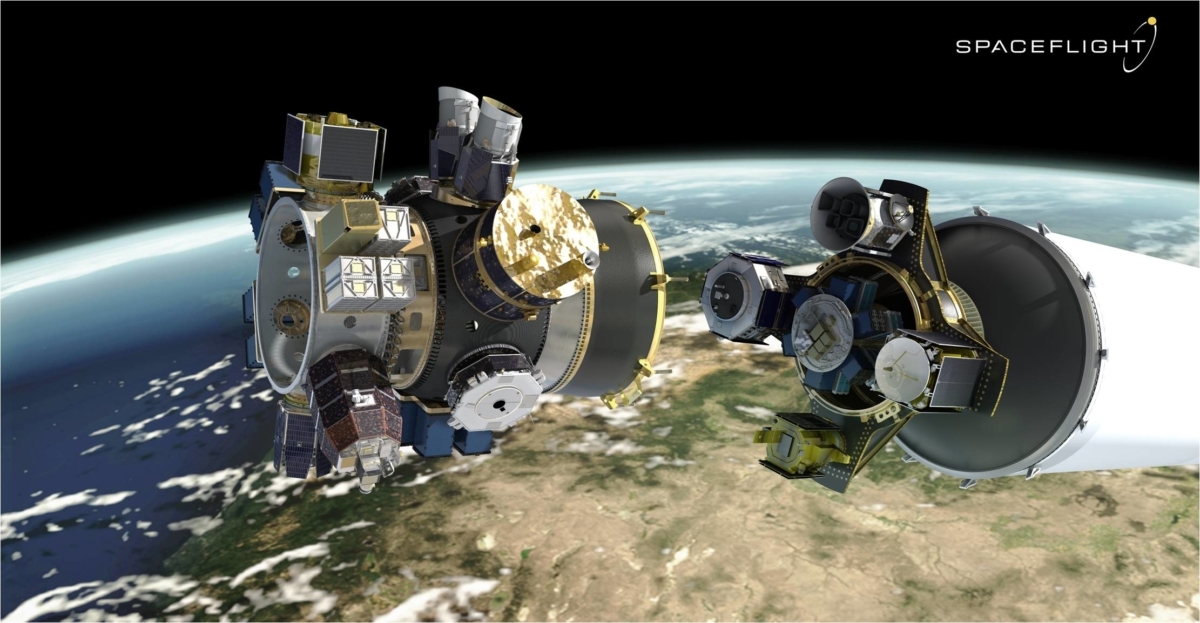
Cluttering the Space Commons? Upcoming SpaceX Launch Irks Orbital Debris Experts

Space-junk experts are raising a red flag about the upcoming launch of more than 60 small satellites atop a SpaceX Falcon 9 rocket.
The mission, dubbed SSO-A: SmallSat Express, was scheduled to launch Monday (Nov. 19) from Vandenberg Air Force Base in California, but SpaceX pushed it back to perform additional inspections of the rocket. No new launch date has been set.
SSO-A: SmallSat Express will be the largest rideshare mission from a U.S.-based launch vehicle, with 25 percent of the customers launching for the first time. [See the Evolution of SpaceX's Rockets in Pictures]
Mission management provider Spaceflight has contracted with more than 60 spacecraft from approximately 35 different organizations. Spaceflight is a service offering of Spaceflight Industries, based in Seattle.
The satellites are to be dispersed by SHERPA platforms, free-flying secondary payload dispensers.
Space debris on release
"What they [Spaceflight] haven't shared is how these 70+ satellites are going to be deployed," said T.S. Kelso of CelesTrak, an analytical group that keeps an eye on Earth-orbiting objects. (Note: A Spaceflight press release from August stated that 71 satellites would be aboard the launch, but the company's website currently says the number is "64+.")
"I checked with one of the operators — trying to get a head start on how we're going to ID all of these —and learned that the two SHERPA platforms are going to be released from the Falcon 9 with no attitude control or attitude determination."
Get the Space.com Newsletter
Breaking space news, the latest updates on rocket launches, skywatching events and more!
Kelso's bottom line: "I think this is not only irresponsible from a safety-of-flight perspective, but it jeopardizes the time and resources of many of the small operators who may never even hear from their satellites," he told Inside Outer Space.
Kelso's guess is that about one-third of the satellites to be deployed will basically be space debris on release and there will be difficulties in sorting out this kind of mess.
Be prepared for chaos
Kelso spoke extensively with the U.S. Air Force's 18th Space Control Squadron team last week, at the Space Situational Awareness Operators' Workshop in Denver. The 18th Space Control Squadron, which is based at Vandenberg, detects, tracks, and identifies all artificial objects in Earth orbit.
"They have next to nothing useful from Spaceflight for the SSO-A launch on Monday. This is totally irresponsible. Be prepared for chaos," Kelso tweeted on Friday (Nov. 16).
I reached out to Spaceflight for comment for my previous article about this launch, "Cluttering Space: Upcoming Launch Red Flagged." In response to that query, Spaceflight spokeswoman Christine Melby said via email: "Thank you for reaching out. At this time we do not have a comment on this article."

Space squadron
Meanwhile, the 18th Space Control Squadron at Vandenberg recently tweeted: "Check out the SSO-A launch on Monday at #Vandenberg AFB w/ 64+ spacecraft! We're working closely with all O/Os [owner/operators] to track & catalog the objects ASAP. Thanks to all O/Os for their cooperation, transparency & support for #spaceflightsafety."
But some other experts remained concerned.
"CSpOC [the Combined Space Operations Center] has developed a set of recommendations for optimal cubesat operations, including launch deployment and identifications," said Jer-Chyi Liou, NASA's chief scientist for orbital debris in the Orbital Debris Program Office at the agency's Johnson Space Center in Houston.
"It appears that the recommendations were not taken seriously by the SSO-A developers," Liou told Inside Outer Space.
Those recommendations were based on the proliferation of cubesats and associated technology that pose unique tracking and identification challenges. You can read the recommendations here.
Leonard David is author of "Mars: Our Future on the Red Planet," published by National Geographic. The book is a companion to the National Geographic Channel series "Mars." A longtime writer for Space.com, David has been reporting on the space industry for more than five decades. Follow us @Spacedotcom, Facebook or Google+. This version of the story published on Space.com.
Join our Space Forums to keep talking space on the latest missions, night sky and more! And if you have a news tip, correction or comment, let us know at: community@space.com.

Leonard David is an award-winning space journalist who has been reporting on space activities for more than 50 years. Currently writing as Space.com's Space Insider Columnist among his other projects, Leonard has authored numerous books on space exploration, Mars missions and more, with his latest being "Moon Rush: The New Space Race" published in 2019 by National Geographic. He also wrote "Mars: Our Future on the Red Planet" released in 2016 by National Geographic. Leonard has served as a correspondent for SpaceNews, Scientific American and Aerospace America for the AIAA. He has received many awards, including the first Ordway Award for Sustained Excellence in Spaceflight History in 2015 at the AAS Wernher von Braun Memorial Symposium. You can find out Leonard's latest project at his website and on Twitter.